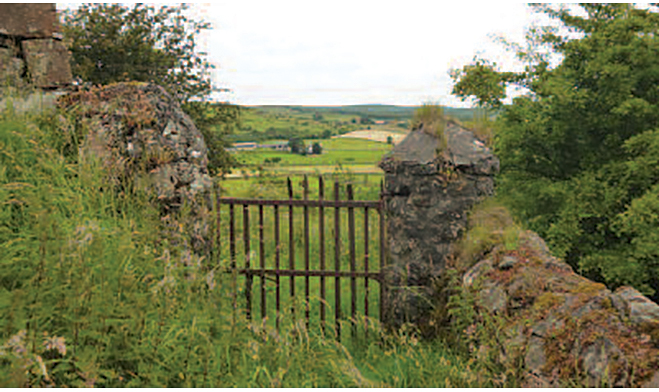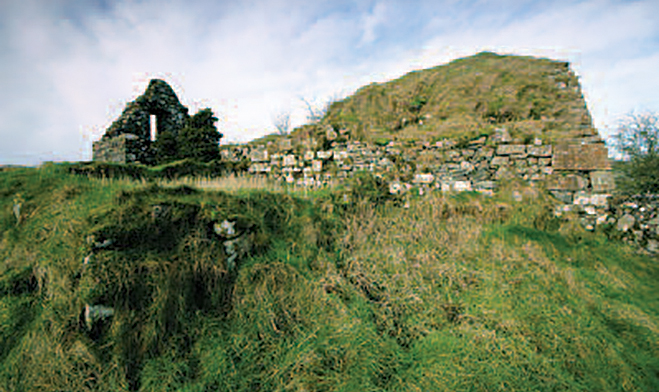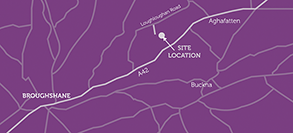Pre-Reformation Trail
Skerry
All the learning in the world will never dissociate Saint Patrick's memory from the Braid valley.
Access details
Access to this site is challenging due to its hilltop location. There is no clear path to the churchyard gate. The ruins can also be viewed at a distance from the Loughloughan Road and can be seen from Slemish Mountain.RPC
Grid Reference
Founding by St Patrick
There is a strong tradition that this church was founded by St Patrick. According to the Book of Armagh, while he was Milchu's slave, St Patrick '...saw an angel ascend to heaven in his sight, leaving his footstep impressed on the rock of the other mountain (the Hill of Skerry)'. It is believed by some that the Hill of Skerry was Milchu's stronghold and that a church was built on the site following his demise. An indented stone is located in the ground near the churchyard gate and is still associated with this story. Pilgrims in the 1800s are said to have knelt at this stone as part of their religious observances on St Patrick’s Eve.
The church
The present ruin dates to the late medieval period. In 1622, the church was noted as decayed and 50 years later it was a ruin. In the 1830s, it was commented that the stones had been carefully fitted and that there had been a freestanding steeple or belfry. It was also noted that the church had been ruined in 1730 and what remained was a 'confused grassy heap'. It was believed that there were once a range of monastic buildings though no traces have survived.
According to local tradition, William III's soldiers were stationed in the church. The story goes that the locals took their horse's saddles and in revenge, the soldiers wrecked the church and burnt its roof.
The graveyard
The graveyard was mainly used by Catholic families and some continue to have burial rights here. The wall was rebuilt in 1819.
The Clandeboye O'Neills
The vault at Skerry was used by the clan chieftains, the O'Neills of Clandeboye. The O'Neills claim to be the oldest traceable family in Europe with records going back to the mid 300s. The vault contains the remains of Shane McBrian O'Neill who was the last lord of Clandeboye and it was to him that James I eventually settled the O'Neill estate following plantation. Shane's castle and Broughshane (Shane’s fort) both take their names from Shane McBrian O'Neill. The vault also contains the remains of Charles O'Neill who died in 1769. He built Tullymore Lodge, the dower house of the O'Neill family until the 1930s, and Cleggan Lodge which was taken over by Hugh O'Neill, 1st Viscount Rathcavan in the early 1900s.
O'Rawe Family
Bryan O'Rawe, an inn holder from a leading Ballymena family, is buried here. In 1806, he was leased ' customs and fairs and markets of Ballymena'. Bryan Street in Ballymena is named after him. One of his sons took part in the 1798 rebellion. O'Rawe's grave at Skerry pronounces that he was 'once an old and respectable inhabitant of Ballymena'. He died in 1831.
| Churchyard Facts & Figures | |
| First used as a Christian religious site | Believed to be c. mid 400s AD |
| First reference as a religious site | c.1300 |
| Papal taxation of c.1300 | 20 shillings |
| Church name used in Papal taxation c. 1300 | Schirich |
| Church size | Medieval / post medieval church - 20.8m by 7.3m (exterior) |
| Discontinued use of church | Probably 1500’s, remained pilgrimage site after this |
| Townland | Magheramully |




